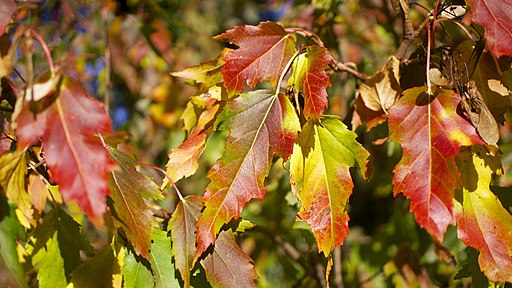There is a study of color perception that has gotten around enough that I would like to devote this post to how I see it, according to my take on whether, and how, language “shapes” thought and creates a “worldview.”
The experiment involved the Himba people, and is deliciously tempting for those seeking to show how language creates a way of seeing the world.
There are two parts to the experiment. Part One: presented with a group of squares, most of them various shades of green and one of them a robin’s egg-style blue, Himba tended to have a hard time picking out which square was “different.” That would seem to suggest that having a single word for green and blue really does affect perception.
Part Two: presented with a number of squares which, to Western eyes, seem like minimally different shades of green, Himba people often readily pick out a single square which is distinct from the others. This, too, seems to correlate with something about their language. Namely, although they only have four color terms (similarly to many indigenous groups), those terms split up what we think of as the green range into three pieces – one color corresponds to various dark colors including dark green, one to “green-blue,” and then another one to other realms of green (and other colors).
Both of these results – on film, a Himba woman seeming quite perplexed trying to pick out the blue square, and meanwhile a Himba man squinting a bit and then picking out what looks to us like just one more leafy green square – seem to confirm that how your language describes a color makes a huge difference to how you see the color. The implications are obvious for other work in this tradition addressing things like terms for up and down, gender for inanimate objects, and the like.
But in fact, both cases pan out in ways quite unlike what we might expect. First, the blue square issue. It isn’t for nothing that some have speculated in all seriousness that if the Himba really can’t perceive the difference between forest green and sky blue, then the issue might be some kind of congenital color blindness (which is hardly unknown among isolated groups for various reasons).

That may seem a little hasty. But no one studying color terms, or language and thought, has ever denied that colors occur along a spectrum, upon which some are removed from one another to an extent that no humans have ever been claimed not to be able to perceive. Russians can suss out where dark blue starts shading into light a teensy bit faster than English speakers because they have separate words for light and dark blue – indeed. But no one claims that an English speaker plain can’t see the difference between navy blue and sky blue.
Along those lines, no one would remotely expect that a Himba speaker, or anyone, could actually not see the difference between spectographically distinct shades such as sky blue and forest green. One suspects that issues to do with familiarity with formal tests and their goals may have played a role here – but not that having the same word for green and blue actually renders one what we would elsewhere term color-blind.
Then, as to the shades of green, I’m the last person to say that the man on film didn’t pick out that shade of green faster than I would have expected. However, the question is whether we are seeing a “world view,” we must decide that question according to a very simple metric. The extent to which we treat something in someone’s language as creating a “cool” worldview must be the same extent to which we are prepared to accept something in someone’s language that suggests something “uncool” – because there are plenty of such things.
A demonstration case is Chinese, in which marking plurality, definiteness, hypotheticality, and tense are all optional and as often as not, left to context. The language is, compared to English, strikingly telegraphic. An experiment was done some time ago suggesting that, for example, the issue with hypotheticality meant that to be Chinese was to be less sensitive to the hypothetical than an English speaker is. That is, let’s face it, a cute way of saying that to be Chinese is to be not quite as quick on the uptake as a Westerner.
No one liked that, and I assume that most of us are quite prepared to say that whatever the results of that experiment were, they can’t have anything significant to do with Chinese perception of reality. Well, that means the verdict has to be the same on the Himba and green – we can’t think of him as seeing a world popping with gradations of green we’d never dream of if we can’t accept the Chinese being called a tad simple-minded. This is especially when we remember that there are many groups in the world whose color terms really don’t divvy up any one color in a cool way – they just don’t have as many names for colors, any colors, as we do. Are we ready to condemn them as not seeing the world in colors as vivid as we do because of the way they talk?
Surely not, and that’s the lesson the Himba experiment teaches. Language affects worldview in minuscule ways, of a sort you can tease out in a lab. However, the only way to call these minuscule ways “worldviews” is to accept that to be Chinese is to be dim. I don’t – and I hope none of the rest of us do either.





[…] schon öfter. John McWorther — ausgewiesener Skeptiker des Felds — meldet sich im OUP-Blog zu Farben, Sprache & Denken zu Wort […]